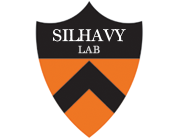Use of gene fusion to study secretion of maltose-binding protein into Escherichia coli periplasm
Type
We have employed the technique of gene fusion to fuse the LacZ gene encoding the cytoplasmic enzyme beta-galactosidase with the malE gene encoding the periplasmic maltose binding protein (MBP). Strains were obtained which synthesize malE-lacZ hybrid proteins of various sizes. These proteins have, at their amino terminus, a portion of the MBP and at their carboxyl terminus, enzymatically active beta-galactosidase. When the hybrid protein includes only a small, amino-terminal portion of the MBP, the hybrid protein residues in the cytoplasm. When the hybrid protein contains enough of the MBP to include an intact MBP signal sequence, a significant portion of the hybrid protein is found in the cytoplasmic membrane, suggesting that secretion of the hybrid protein has been initiated. However, in no case is the hybrid protein secreted into the periplasm, even when the hybrid protein includes almost the entire MBP. In the latter case, the synthesis and attempted export of the hybrid protein interferes with the export of at least certain normal envelope proteins, which accumulate in the cell in their precursor forms, and the cell dies. These results suggest that a number of envelope proteins may be exported at a common site, and that there are only a limited number of such sites. Also, these results indicate that it is not sufficient to simply attach an amino-terminal signal sequence to a polypeptide to assure its export.

